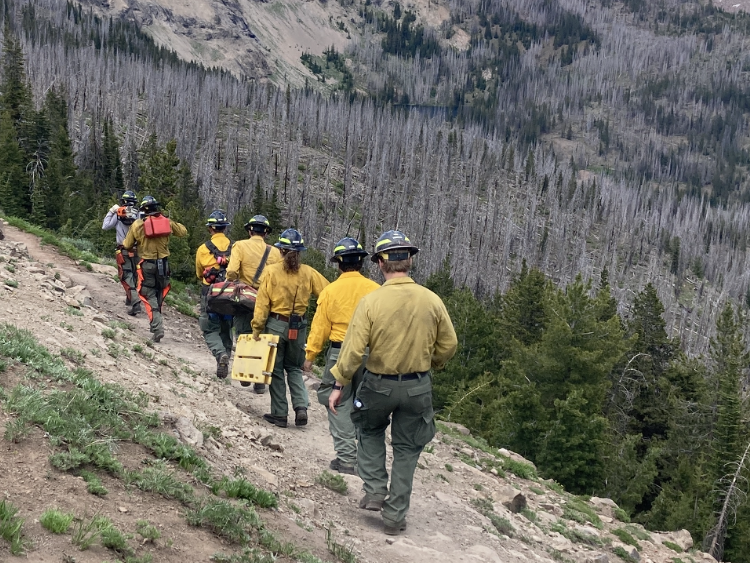Off the Beaten Path: Perils and pleasures of sourdough
Published 10:15 am Friday, January 21, 2022
When the temperature drops, snow and ice cover the landscape, and the wind howls, there is something I’m partial to doing — along with leaving faucets dripping, opening cupboard doors below sinks, hauling in another load of firewood — and that’s baking bread.
My first bread baking attempts met with great success — if one wanted to turn out construction-grade cement blocks.
An elderly friend offered me a recipe with drawings to accompany the instructions — the recipe old enough that the drawings showed baking the bread in a wood cookstove. Success! Less flour and more kneading. Even with baking in an electric oven, bread turned out edible. Most of the time. Well, some of the time. I needed more practice.
My bread-baking goal: Bake all of the bread products our family would eat for the year, which meant baking bread about four or five times a week. I’d often whip up a homemade soup to accompany our noontime bread. We had an increase of friends who just happened to drop by at lunchtime.
The children supported my efforts — they fashioned mini-loaves, kneading with fingers, fists and sometimes elbows.
When the year was up, I realized there were two aspects to bread baking — the chemistry and the artistic execution. I didn’t do too badly with the chemistry part. As for artistic endeavor, not so much. The tops of loaves looked like potato storage sheds with wind damage.
Next project — sourdough.
I first heard about sourdough from my parents. In the late 1930s, they each traveled to Fairbanks, Alaska, for an adventure where they met each other and married. In my childhood, they related tales of trappers and gold prospectors with their sourdough starts kept warm by the woodstove. My Alaskan sourdough start did not come from my parents.
When the Japanese bombed Pearl Harbor, my parents, concerned the Japanese might bomb Alaska, packed and left. No time for sourdough starts.
Years later, a friend asked if I’d like an authentic Alaskan sourdough start. She noted her husband had been in Alaska before they married and he brought back a start.
“My husband is so careful to keep the start alive,” my friend said, “he brought it with us on our honeymoon.”
My sourdough journey began in earnest.
I discovered San Francisco sourdough breads possessed a distinctive flavor, a sharpness. My Alaskan sourdough start gave breads a rich yet mild flavor, and a nice texture without the sharpness.
I kept my sourdough start fed. (One cup of flour, one cup of warm water.)
In time, I got distracted feeding family, houseplants, animals, etc. and neglected feeding my sourdough. I went on vacation and didn’t take it with me. The start died into a puddle of off-colored liquid.
Years later in Oregon, I purchased Oregon pioneer sourdough. This sourdough contained Oregon hops and had a rich yet mild flavor and texture. I used it in breads, rolls, cookies, pancakes, and pizza dough.
To keep this start going, I conscientiously fed it. I never discarded the part not needed until I ended up with two gallons of sourdough.
Still, I couldn’t waste any. Normally, only a cup or two is needed for a recipe. I sloshed the two gallons into a tub-sized bowl, added a bag of flour, salt, sweetener, oil, and stirred. Kneading the dough felt like a two-hour session lifting barbells at a gym. The taste and texture turned out so sharp I could have grabbed a loaf, hauled it out to the woodpile chopping block, and used the loaf to split kindling.
I started again with a cup of refreshed sourdough along with a pinch of yeast, and flour enough to make a slurry. The solution turned bubbly and fragrant. The family, distracted by a visiting bookmobile, forgot to check on it. Later, I found the sourdough had escaped the bowl, flowed across the counter, oozed into the silverware drawer, and looked as though it was trying to escape out the back door.
Friends suggested this scene had the makings of a horror flick titled “The Sourdough That Ate Grant County.”
Lately, no one has stopped by for soup and bread.









